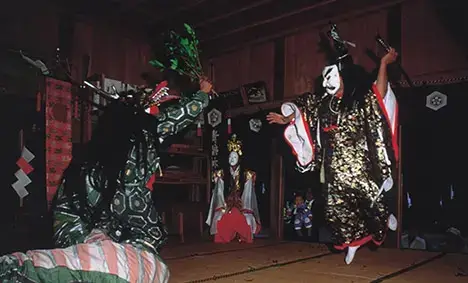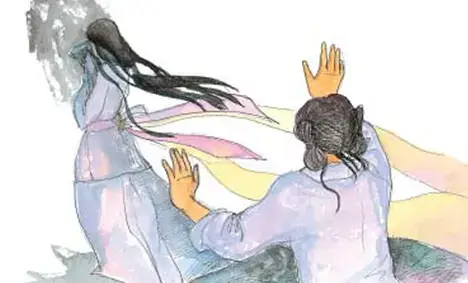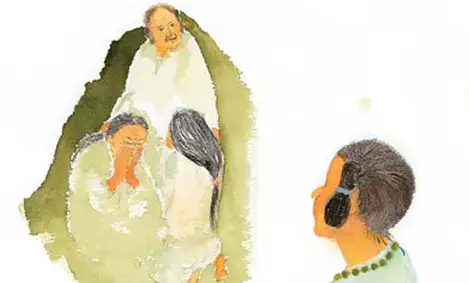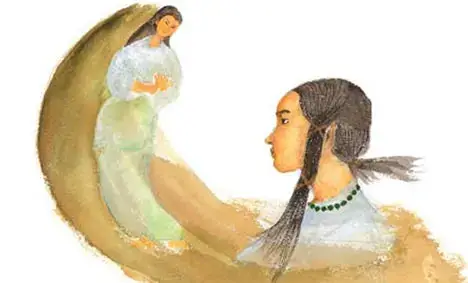第二章History of Izumo, Chapter 2
Touring the Myths
Of all of the stories about Izumo written in the Kojiki, the story of a god called Susanoo no Mikoto exterminating a giant snake in “The extermination of Yamata no Orochi” is especially famous. Furthermore, there is the legend of the god of Izumo Okuninushi presenting his land to Amaterasu Omikami, who ruled the Land of the Gods, in the Kuniyuzuri myth (transfer of the land), and also the legend of a white hare which was saved from being skinned by a shark by Okuninushi, in Inaba no shiro usagi (the Hare of Inaba).
There is also the Izumo no Kuni Fudoki, a collection of Izumo’s traditions compiled in 733, which has the record of the Kunibiki legend (pulling together the land), in which a god gathers the earth together to create the country. This book also tells of the establishment of “Izumo Taisha Grand Shrine” and about the origin of Japan. Izumo is the stage for many of those stories.
By visiting the birthplace of Japanese mythology, you can experience the world of Japan’s origin myths on a deeper level.
But before immersing ourselves deeper in Japanese mythologies, let’s keep in mind that the gods, emperors or places can be known under different names and that can complicate our understanding of ancient texts.
Sometimes it will just be a variation of the name, a little change in the Japanese pronunciation, for example: Yakamihime becoming Yagamihime or Suserihime becoming Suseribime, Izanaki becoming Izanagi etc. But here, the boss of the game is Okuninushi, a god who has 5 different names in the Kojiki and 7 in the Nihon Shoki! And due to syncretism between Shinto and Buddhism, he is also called Daikoku-sama, the god of wealth. Because the Chinese characters of his name can be read the same as a Buddhist divinity called Daikokuten, people started to believe they were the same god.
To make things easier, we will usually call these gods by their most common names. Now, get ready to dive in the strange and complicate world of Japanese legends!
Touring the Myths Vol.1 “The extermination of Yamata no Orochi”
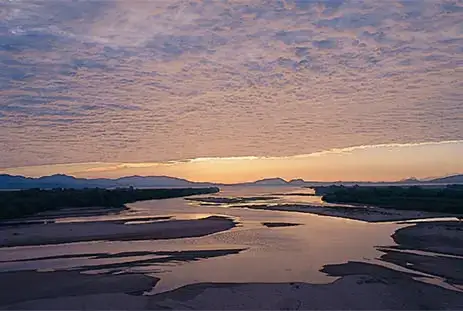
The true nature of the legendary giant snake who attacked Izumo no Kuni...
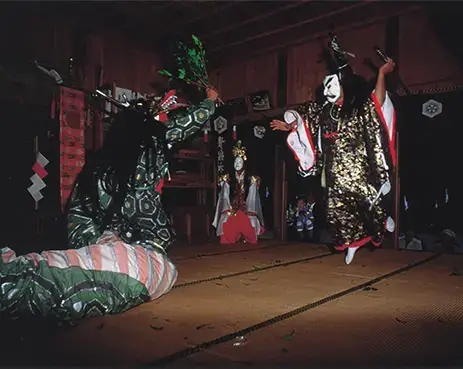
Kojiki (Records of Ancient Matters) was presented by Oono Asomi Yasumaro and others in the fifth year of the Wado period (year 712) and is Japan's oldest history book, depicting the events from the creation of Japan up to the reign of Empress Suiko.
The extermination of Yamata no Orochi, one of the legends of Izumo, is recorded in the first volume.
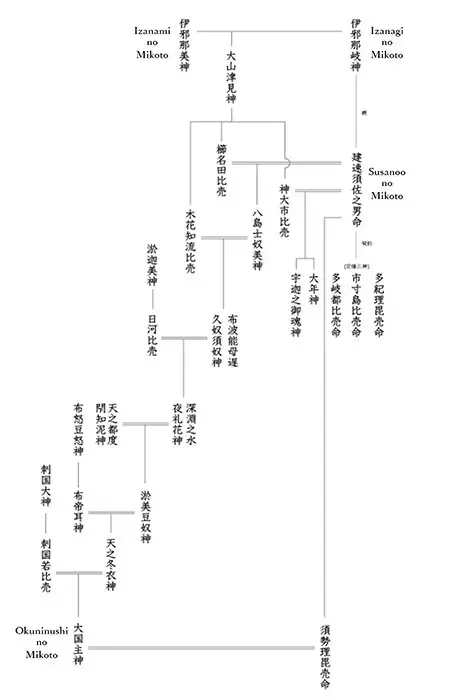
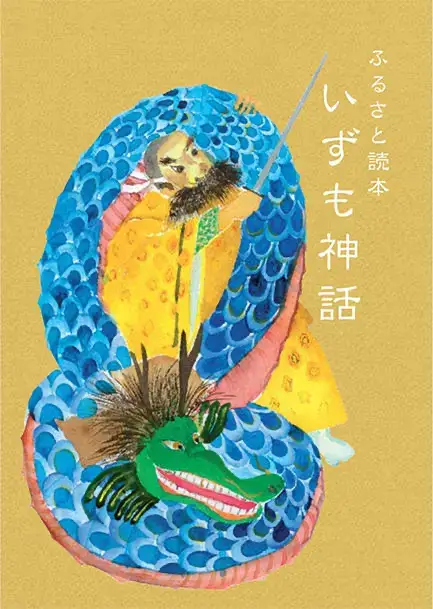
Throughout all of Japanese mythology, the most remarkably unique god is Susanoo no Mikoto. His temperament wild, violent and full of manliness...mixed with his ungodlike, complicated personality, he is more widely known for his appeal as a human than as a god.
The legend of Yamata no Orochi begins with Susanoo's banishment. Susanoo's father banished him for disobeying his orders, crying and crying that he wanted to meet his late mother. Susanoo went to the Heavens (Takamagahara) where his sister Amaterasu Omikami (the goddess of the sun) lived. However, because of Susanoo’s rampant misbehavior, Amaterasu Omikami was hiding in a cavern called Amanoiwayado. Because the goddess of the sun was hiding, the world turned to darkness, and disaster befall the earth. Seeing this, the gods of heaven pulled Amaterasu out of Amanoiwayado and banished Susanoo.
Susanoo descended onto a place called Torikami in Okuizumo, Shimane, which is now known as Mt. Sentsuuzan, home to the headwaters of the Hiikawa River that runs through Izumo.
After walking for a while, Susanoo happened upon a beautiful young woman (Kushinadahime) and an old couple who were crying. After being asked why, they responded that the dreadful Yamata no Orochi (giant snake) was going to eat Kushinadahime, who was the couple’s daughter. Thus, Susanoo agreed in exchange for the daughter’s hand in marriage to exterminate the Yamata no Orochi.
It is written in a section of Kojiki as follows.
“Orochi has large red eyes, with eight heads and eight tails in one single body. Moss, trees and shrubs grow from its body, and the extent of its length stretches over eight valleys and surpasses eight mountains. Its belly is always swollen and dripping with blood.”
The huge river people feared as Orochi
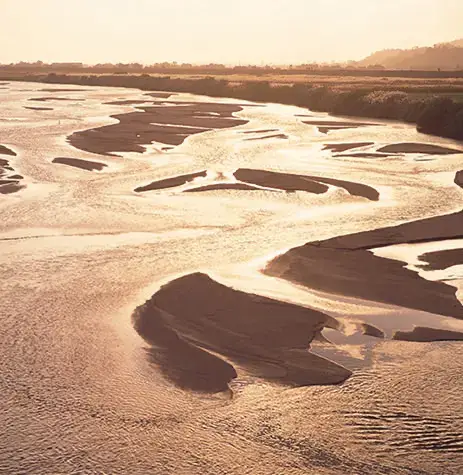
There are many interpretations of the legend of Yamata no Orochi. However, it's believed that the real identity of Orochi could be the Hiikawa River, which was feared for its repeated flooding.
The place where Susanoo descended was near the Hiikawa River's headwaters at Torikami in Okuizumo. Some believe that Okuizumo is deeply connected to the legend of Yamata no Orochi because this place is said to be the base of Tatara Traditional Ironwork. Tatara Traditional Ironwork is an ancient Japanese method of making iron by using bellows to blow air into the furnace.
In order to produce the charcoal needed for Tatara Traditional Ironwork, trees were felled in huge amounts, thus bringing forth the flood. In the process of harvesting iron sand (the raw material for producing iron), the downstream region of the Hiikawa River suffered, being tainted red with impurities. Kushinadahime was a symbol of the rice fields, which were ruined by yearly flooding with the iron sand-tainted waters overflowing from the Hiikawa River.
In the Unnan region of Okuizumo are scattered many places associated with the extermination of Yamata no Orochi, such as Inada Shrine which worships Kushinadahime, and Susanoo and Kushinadahime's new home Suga Shrine.
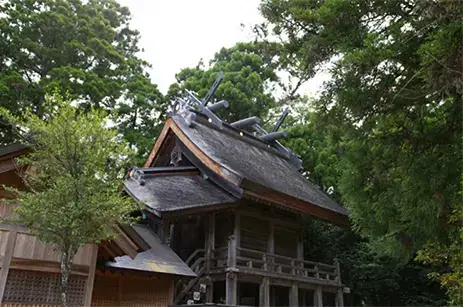
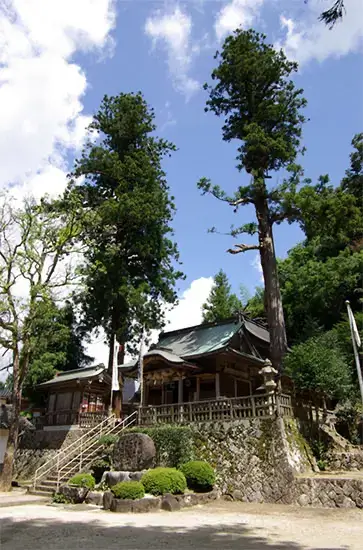
The Hiikawa River which flows through Izumo City makes big patterns on its sandbanks resembling a snake's scales. The land along the river twists and turns, with trees growing lush on both sides as the water flows leisurely into the sea. Seeing its current shape makes it hard to picture it as a giant snake, however, should the large river overflow, it might reveal its violent nature as Orochi.
Though there are many interpretations of the extermination of Yamata no Orochi, there is no real way to solve the mystery of its true meaning, which is exactly what makes it possible to picture such a magnificent drama.
Won’t you pay a visit to this land like Susanoo did?
Touring the Myths Vol.2 “The Transfer of the Land”

Why was Izumo Taisha Grand Shrine built? The answer may lie in this story of the gods fighting for control of the land.
Once upon a time, Izumo no Kuni was ruled by a god called Okuninushi no Okami.
However, Amaterasu Omikami, who ruled the Heavens, saw this and began to think that Ashihara no Nakatsukuni should be ruled by her children.
* Ashihara no Nakatsukuni: There are various theories about where this is, but in this text, it refers to the Izumo area
Then, Amaterasu said, "Go ahead of me and make all the gods on earth obey you,” dispatching Amenohohi down for the job. However, Amenohohi felt so much reverence for Okuninushi that he ended up becoming his servant, without ever to come back again.
Amaterasu has then dispatched Amenowakahiko, but this god had his heart stolen by Okuninushi's daughter, and ended up building a palace in which he settled down. Amaterasu sent a Green Pheasant called Nakime to find out what had happened, but the Green Pheasant was killed by Amenowakahiko.
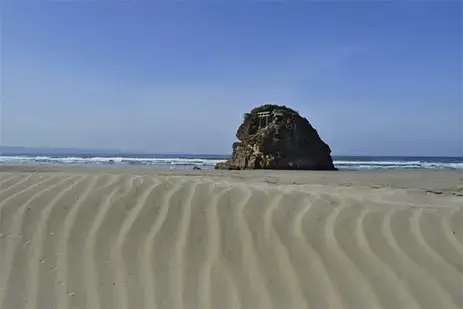
Because none of her messengers returned, Amaterasu decided to send two gods, Takemikazuchi, boastful of his own strength, and the light-footed Amenotorifune, to solve the problem by force.
After the two gods descended upon the shore of Izasa in the Land of Izumo (the current Inasa no Hama Beach), they drew their swords, thrusting the handles down, and sat over the points of their swords crossed legged.
And they said to Okuninushi in a strong tone, “We came on orders of our master Amaterasu. Our master Amaterasu has decided that Ashihara no Nakatsukuni is to be ruled by her children, so what do you think of this?”
Okuninushi replied, "It isn't my place to answer such a question. My son, Kotoshironushi shall give you the answer. Unfortunately, he is away, playing on the Cape of Miho, catching birds and fish.”
Takemikazuchi sent Amenotorifune to meet Kotoshironushi, and when asked about giving up the land, Kotoshironushi responded, “I will give the country away to Amaterasu's children, just as you say.”
Before long Okuninushi's other son Takeminakata, known for his strength, had returned holding a large rock. Takeminakata threw the rock saying, "If you want this country, let's see who's stronger,” and then he grabbed Takemikazuchi's arm, clinging on to it.
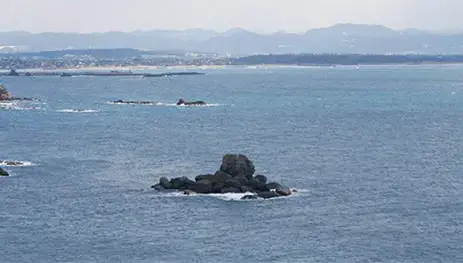
With this, Takemikazuchi’s arm turned into a pillar of ice and a sharp sword. Takeminakata flinched in shock, so next Takemikazuchi grabbed onto Takeminakata's arm, twisting it lightly and throwing him to the ground. Takeminakata became scared and ran off.
Takemikazuchi followed Takeminakata as he fled, eventually tracking him to Shinano no Kuni (the current Nagano Prefecture), where he caught him and held him down at Lake Suwa.
Begging for his life, Takeminakata said, “I will not step foot out of the Land of Suwa. I will hand over to you all of Ashihara no Nakatsukuni, so please spare me."
Takemikazuchi returned to Izumo, and after telling Okuninushi what happened, Okuninushi replied, "I will give over this country as you wish. But in exchange, I want you to build me a great temple, like Amaterasu’s palace in heaven.” Takemikazuchi accepted his wish and built a palace for Okuninushi. It is said that this temple is Izumo Taisha Grand Shrine.
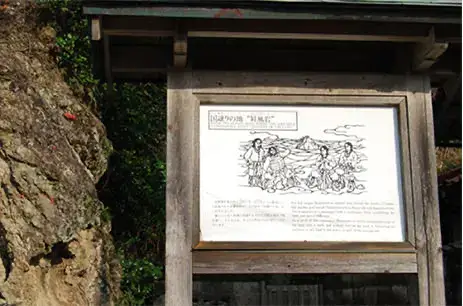
This myth is written in the Kojiki (Records of Ancient Matters) and the Nihon Shoki (The Chronicles of Japan), which were made in the Nara period.
Among the many myths with a universal scope and unbelievable contents, this story of the Kuniyuzuri myth (transfer of the land) has a flavor of political bargaining and flawed humanity that we recognize in the present time.

How about walking on Inasa no Hama Beach, the stage of this myth, while trying to feel the same emotions as Amaterasu, who sent off messenger after messenger to gain control of Ashihara no Nakatsukuni, as Kotoshironushi who readily agreed to cede the country, as Takeminakata who sought to defend it despite failing, and as Okuninushi who ended up surrendering his country?
Touring the Myths Vol.3 “Kunibiki Legend (Pulling Together the Land)”

Splitting and pulling the land, this is indeed the power of the gods
Once upon a time, Yatsukamizuomizunu, the God who created Izumo, looked over the Land of Izumo. He began thinking, “This country is like a thin, long piece of fabric. Let's find some land to sew onto it to make it bigger."
Gazing out over the sea for any spare land, he came across a land called Shiragi on the Korean Peninsula, which had some unused land. Mikoto used a wide plow, stabbing into the ground as if it were a big fish, then dug up and separated the land as if he were ripping apart the meat of a fish.
Then he attached a sturdy, braided rope to the land, and saying “Kuniyo, koi,” (come here, land) pulled with all of his strength. The land started moving slowly and fluidly, just like a boat on the river, sticking it fast to the Land of Izumo.
Thus, the land that was added in this way was called Kizuki no Misaki, stretching from present day Kozucho to Hinomisaki. The pulling-rope was fastened to a stake which became Sahimeyama (currently Mt. Sanbe) and the rope itself became Sono no Nagahama.
After that, the god used the same method to pull and join to his land the Land of Sada to the north (from present-day Kozu to eastern Kashima-cho) and the Land of Kurami (present-day Shimane-cho, Matsue City). Finally, the land pulled from the Land of Koshi in the Hokuriku region became Miho no Saki (present-day Miho-no-seki-cho, Matsue City).
This time, the rope he used to pull the land was attached to a stake that became Hi no Kamitake (now Mt. Daisen) in the Land of Houki, and the rope itself became Yomi no Shima (current Yumigahama).
Then he said, “I finished pulling the land together,” stuck his cane into the ground, and said “Oe” (meaning, “finished”). Thus, that land is called Oe.
The Nagahama Shrine worships Yatsukamizuomizunu, the main character of this Kunibiki legend which opens the Izumo no Kuni Fudoki.
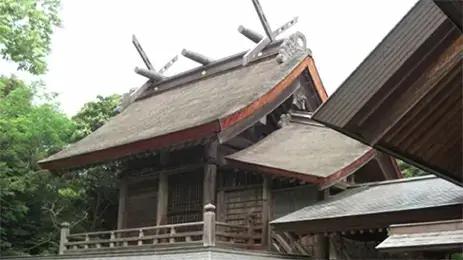

The mystery of modern geography and place names matching the mythology
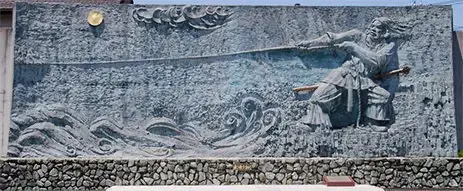
The Kunibiki legend (pulling together the land) described at the beginning of Izumo no Kuni Fudoki is especially big in scale, even among the many myths about Izumo, which makes its story indeed worthy to be called the work of a god.
Judging from all this, it might be easy to interpret it all as fiction, but it could very well be more than that.
One reason to call this more than fiction is that the settings throughout this myth match the current geography and place names of the actual places.
If you check a map, you can confirm that Izumo lies to the south of Lake Shinji and Nakaumi. To the north is the Shimane Peninsula, stretching out long and narrow from east to west, which is divided in four major regions. Here is where the stakes used for the Kunibiki became Mt. Daisen and Mt. Sanbe, and the ropes became Sono no Nagahama and Yomi no Shima. All of these locations match those described in the myth.

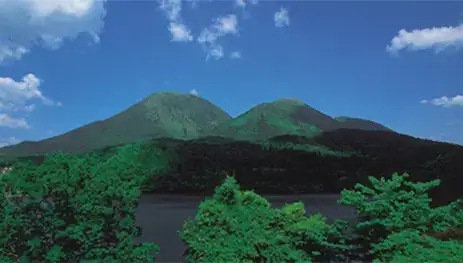

There is a theory that the Shimane Peninsula was underwater in the Jomon period (c. 14,000 - 300 BCE), and even if its current topography was formed through natural phenomena, it is astonishing how the people of ancient Izumo imagined it to be the work of the gods.

If you look north of Izumo, you can catch a glimpse of the Shimane Peninsula: the low mountain range stretching from east to west you can see over Lake Shinji in the distance. As you gaze, try to feel Mikoto's immense power splitting up the earth and pulling it together.
About Izumo no Kuni Fudoki
A narrative compiled in 733 about the Land of Izumo. It records the origin of place names, the status of the land, local products, proverbs and such. The original copy has already been lost, and currently only manuscripts remain. Of the five Fudoki of Japan (Hitachi, Harima, Izumo, Hizen, and Bungo) Izumo no Kuni Fudoki is the only one passed down almost intact.



